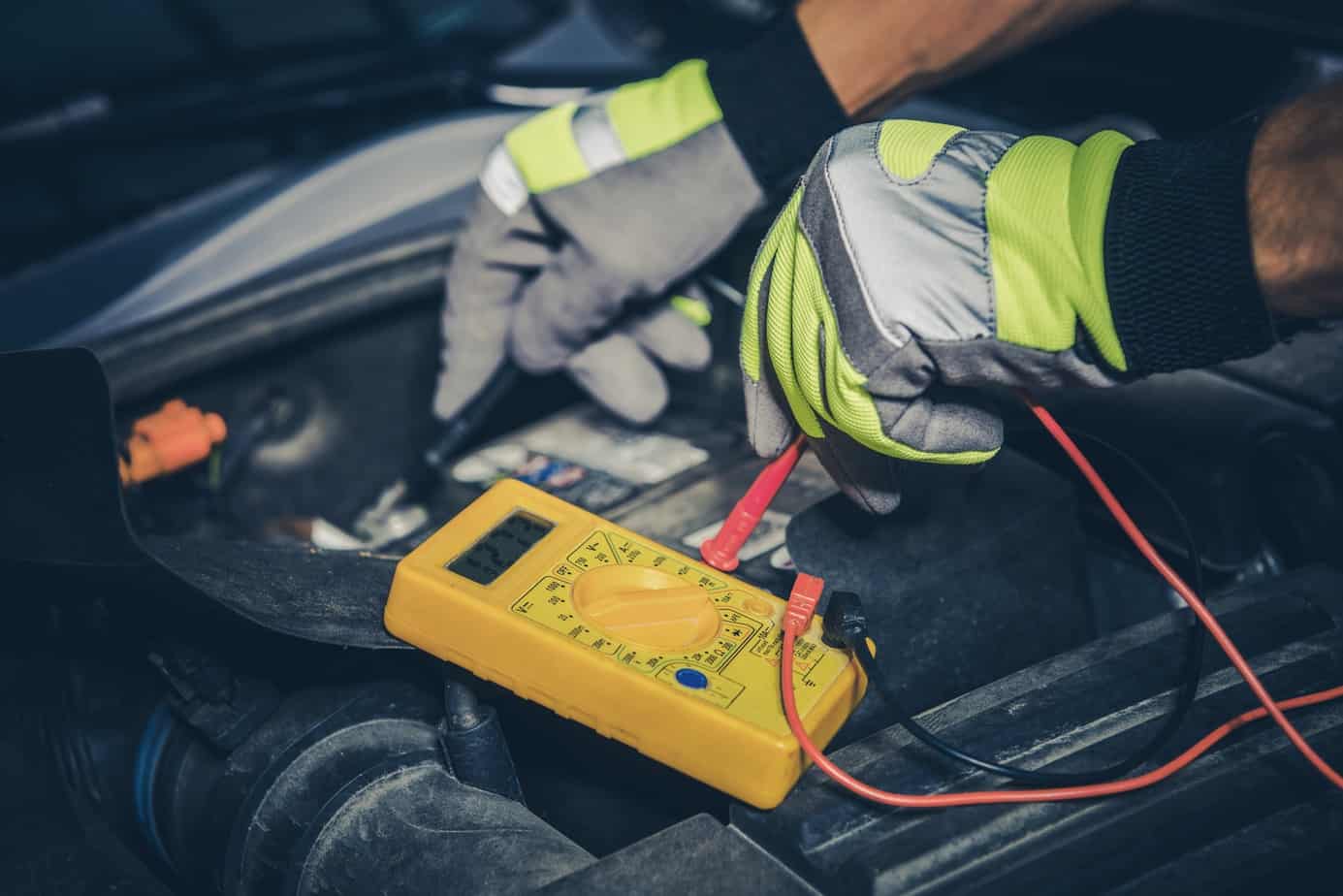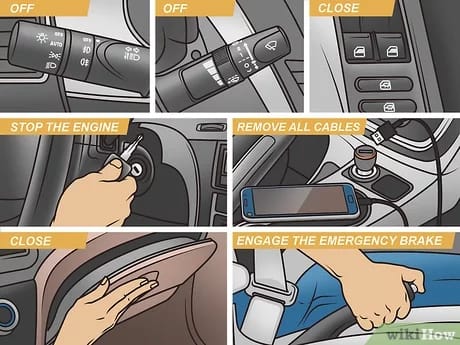Car batteries can be drained by leaving lights or accessories on when the engine is off and by not driving the vehicle regularly. Constant short trips, extreme temperatures, and a faulty charging system can also contribute to battery drainage.
Car batteries are a crucial component of any vehicle, providing the necessary power to start the engine and run various electrical systems. However, they are not immune to depletion, and understanding the factors that can drain a car battery is essential.
This article will delve into the various culprits that can lead to a drained battery and how to prevent such issues. From forgetting to turn off headlights or leaving accessories plugged in when the engine isn’t running to neglecting to drive the vehicle regularly, there are several common mistakes that can drain a car battery. Additionally, factors like frequent short trips, extreme temperatures, and a faulty charging system can also contribute to the battery’s premature depletion. By understanding these causes, car owners can take the necessary precautions and maintain a fully functional battery for their vehicles.

Credit: m.youtube.com
Signs Of A Drained Car Battery
Car batteries can be drained by various factors such as leaving headlights on, a faulty charging system, or using electronic devices when the engine is off. Signs of a drained car battery include dimming lights, slow engine start, and a clicking sound when turning the key.
Regular maintenance can help prevent battery drainage.
A car battery is the life force of a vehicle, providing the necessary power to start the engine and operate the electrical components. However, over time, car batteries can become drained, leading to a whole host of issues. It’s crucial to recognize the signs of a drained car battery to avoid unexpected breakdowns and inconvenience on the road.
Dimming Lights
One clear indication that your car battery is drained is when you notice dimming lights. As you start the engine, if you observe that the headlights, interior lights, or dashboard lights are significantly dimmer than usual, it’s a strong indication that the battery is struggling to provide the required power. This happens because a weak battery cannot sustain the electrical load, causing a drop in voltage and resulting in dim lights. If left unaddressed, it can eventually lead to electrical failure throughout the vehicle.
Clicking Sound When Starting
Another telltale sign of a drained car battery is a clicking sound when you try to start the engine. If you turn the key or push the ignition button and hear a rapid clicking noise but the engine fails to start, it indicates that the battery lacks sufficient charge to initiate the ignition process. The clicking sound is usually the result of the starter motor receiving inadequate power from the weakened battery. Remember, this clicking sound is different from the engine cranking sound, which occurs when the starter motor tries to turn the engine over but doesn’t have enough power to start it.
If you experience this clicking sound, it’s essential to take immediate action. Ignoring the problem can lead to being stranded on the side of the road, unable to start your vehicle. It’s best to seek professional help, as they can diagnose the issue and provide the necessary assistance to get your car back on the road.
In summary, it’s crucial to be aware of the signs of a drained car battery to prevent unexpected breakdowns. Dimming lights, along with a clicking sound when starting the engine, are strong indicators that your battery is struggling to provide the necessary power. If you notice these signs, it’s best to seek professional assistance to ensure your vehicle’s battery is properly charged and functioning optimally.
Common Causes Of Battery Drain
Car batteries can drain due to various reasons, including leaving lights on, a faulty alternator, or a parasitic drain from a malfunctioning electrical component. Identifying the cause is crucial to prevent repeated battery drain issues.
Parasitic Drain
Faulty Charging System
Common Causes of Battery Drain: When it comes to a car battery drain, there are a few common culprits that can quickly drain your battery and leave you stranded. Understanding these common causes will not only help you prevent future battery issues but also allow you to identify and address the problem promptly. The two most frequent causes of battery drain are parasitic drain and a faulty charging system.Parasitic Drain
Parasitic drain refers to the power consumed by electrical components that remain active even when your car is turned off. These components could include things like your car’s alarm system, clock, or even a malfunctioning electrical circuit. If you notice that your battery is consistently draining, a parasitic drain could likely be the cause. To better understand and diagnose parasitic drain, it can be helpful to perform a parasitic drain test. This test involves disconnecting the negative battery cable and connecting a multimeter in series with the cable and battery terminal. The multimeter will measure any current flowing through the circuit. If the reading is higher than it should be, it indicates a parasitic drain. To pinpoint the exact source of the parasitic drain, you can begin removing fuses one by one while monitoring the multimeter’s reading. When the reading drops significantly, you have identified the circuit responsible for the drain. From there, you can inspect the components within that circuit for any faults or malfunctioning parts.Faulty Charging System
Another common cause of battery drain is a faulty charging system. Your car’s charging system includes the alternator, voltage regulator, and battery, all working together to keep your battery charged. However, if any of these components malfunction, it can lead to an inadequate charge, causing your battery to drain quickly. A faulty alternator, for example, may not properly charge the battery while the engine is running, leading to a gradual battery drain. Additionally, a malfunctioning voltage regulator can cause the alternator to overcharge the battery, resulting in excessive power drain and potential damage to the battery. To determine if your charging system is to blame for the battery drain, a simple voltage test can be performed. With the engine off, use a multimeter to measure the voltage across the battery terminals. A healthy battery should read around 12.6 volts. Start the engine and retest the battery voltage. If the reading is significantly higher, it indicates an overcharging alternator. Conversely, if the reading remains the same or only slightly increases, it could mean a faulty alternator or voltage regulator. Addressing a faulty charging system requires the expertise of a qualified mechanic. They will be able to diagnose the exact issue and recommend the appropriate repairs or replacements to restore your car’s charging system to proper functioning. By understanding these common causes of battery drain, you’ll be equipped to identify, prevent, and resolve battery issues efficiently. Whether it’s a parasitic drain or a faulty charging system, taking prompt action will help ensure that your car battery stays healthy and reliable for years to come.Effects Of Extreme Temperatures
Extreme temperatures can have a significant impact on car batteries, draining their power and reducing their lifespan. Whether it’s extremely hot or cold, these conditions can cause the battery to work harder, leading to faster deterioration and potential failure. Protecting your car battery from extreme temperatures is crucial for its longevity and performance.
Effects of Extreme Temperatures Extreme temperatures can have a significant impact on your car battery’s performance and lifespan. Both cold and hot weather can cause strain on the battery, affecting its ability to start the engine and provide power to electrical components. Understanding the effects of extreme temperatures is crucial for car owners to maintain their battery’s health and avoid unexpected breakdowns. Cold Weather Impact In cold weather, the chemical reactions within the battery slow down, reducing its ability to generate power. This can make it more difficult for the battery to start the engine, leading to sluggish cranking and potential failure to start the car. Additionally, the cold can increase the thickness of engine oil, making it harder for the engine to turn over and further draining the battery. Heat and Battery Performance Heat can also take a toll on a car battery, causing the electrolyte to evaporate more quickly and leading to internal corrosion and damage. Moreover, high temperatures can accelerate chemical reactions within the battery, causing the plates to degrade faster and reducing its overall lifespan. This can result in decreased starting power and an increased risk of failure, especially in older batteries.
Credit: powertronbatteryco.com
Preventative Measures
Preventative Measures to avoid draining a car battery:
Regular Maintenance
Regular maintenance is crucial for a healthy car battery.
- Check battery terminals for corrosion regularly.
- Inspect battery fluid levels and top up if necessary.
- Ensure secure connections within the electrical system.
Limiting Power Consumption
Limit power consumption to extend battery life span.
- Turn off all lights when not in use.
- Unplug devices from the charger once fully charged.
- Avoid overusing power-hungry accessories when the engine is off.
Handling A Drained Car Battery
A drained car battery can be a frustrating situation, especially when you are in a hurry. Knowing how to handle a drained car battery effectively can save you time and hassle.
Jump-starting Techniques
Jump-starting a car is a common method to revive a drained battery. Here’s a simple guide:
- Ensure safety: Park both vehicles close, turn off engines, and wear safety gear.
- Connect jumper cables: Red to positive terminal, black to negative terminal.
- Start the working car: Let it run for a few minutes.
- Start the dead car: Turn the key and if it doesn’t start, wait a bit and try again.
Seeking Professional Assistance
When facing stubborn battery issues or unsure about handling it yourself, it’s wise to seek professional help.
- Contact roadside assistance: They can provide swift battery service on-site.
- Visit a mechanic: A professional can diagnose the issue and suggest repair or replacement.

Credit: www.wikihow.com
Frequently Asked Questions For What Drains A Car Battery
What Drains A Car Battery When Car Is Off?
The most common reasons for a car battery draining when off are excessive parasitic power draw from accessories, electrical short circuits, aging battery, and extreme temperature fluctuations. Checking these factors can help prevent unexpected battery drain. Regular maintenance and professional inspection can also help extend the battery life.
What Is The Most Common Cause Of Car Battery Drain?
The most common cause of car battery drain is leaving lights or accessories on when the engine is off.
How Do You Figure Out What Is Draining My Car Battery?
To identify what’s draining your car battery, check for malfunctioning lights, accessories, and electrical components. Conduct a voltage test or consult a mechanic for a thorough diagnosis.
Can An Alternator Drain A Battery When The Car Is Off?
Yes, an alternator can drain a car battery when the car is off due to a faulty diode. It allows current to flow from the battery draining its charge. Regular maintenance and inspection can prevent this issue.
Conclusion
Understanding the factors that can drain a car battery is crucial for preventing unexpected breakdowns. Regular maintenance, avoiding parasitic drains, and monitoring the battery’s age and condition are key to keeping it in optimal working condition. By staying aware of these factors, you can extend your car battery’s lifespan and ensure reliable performance.
